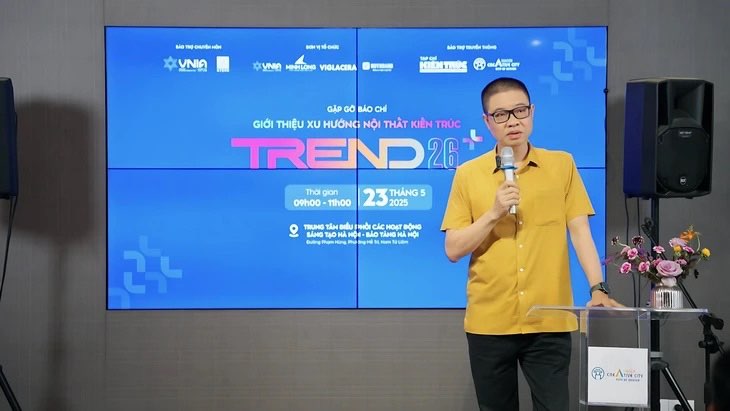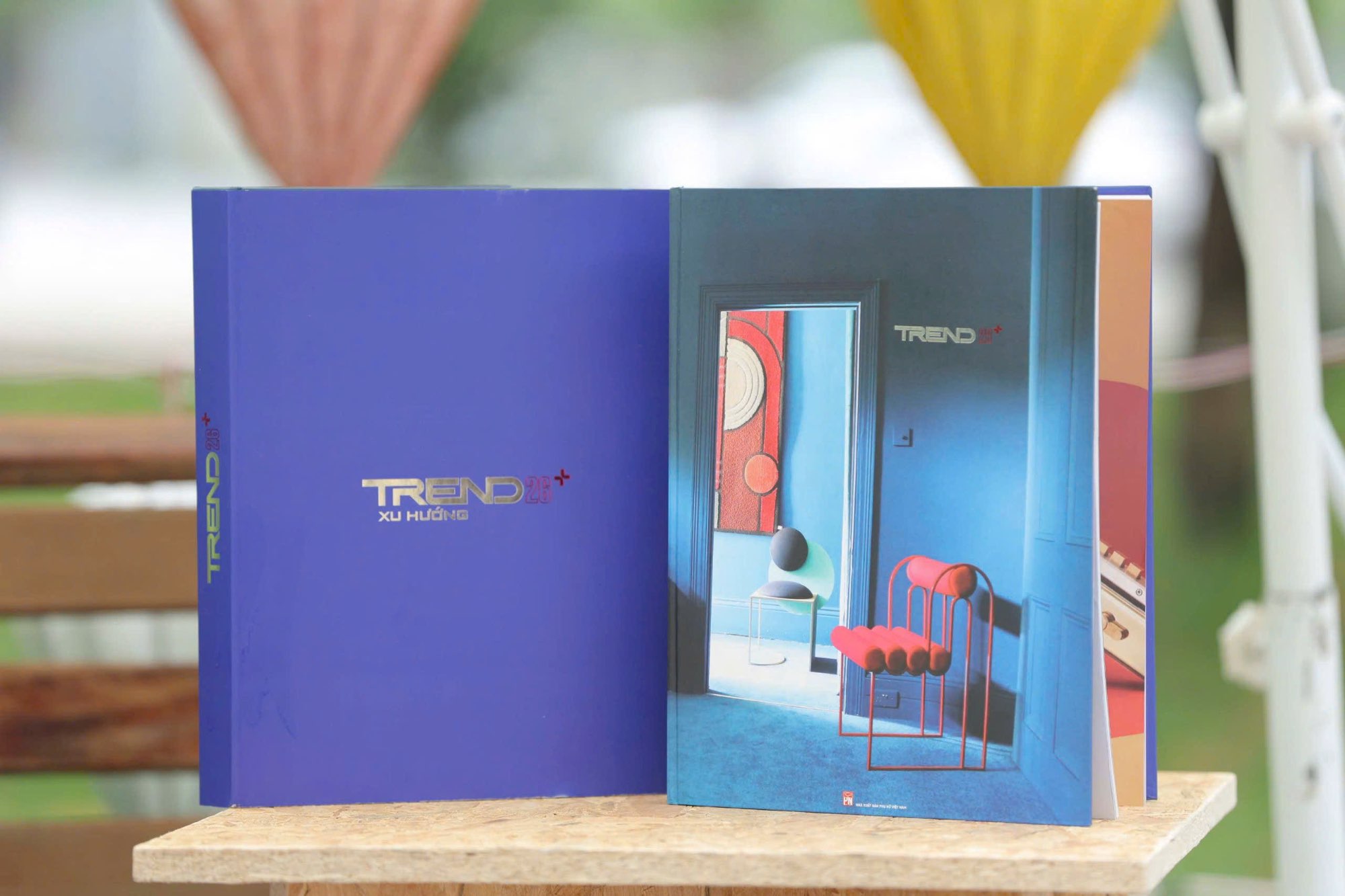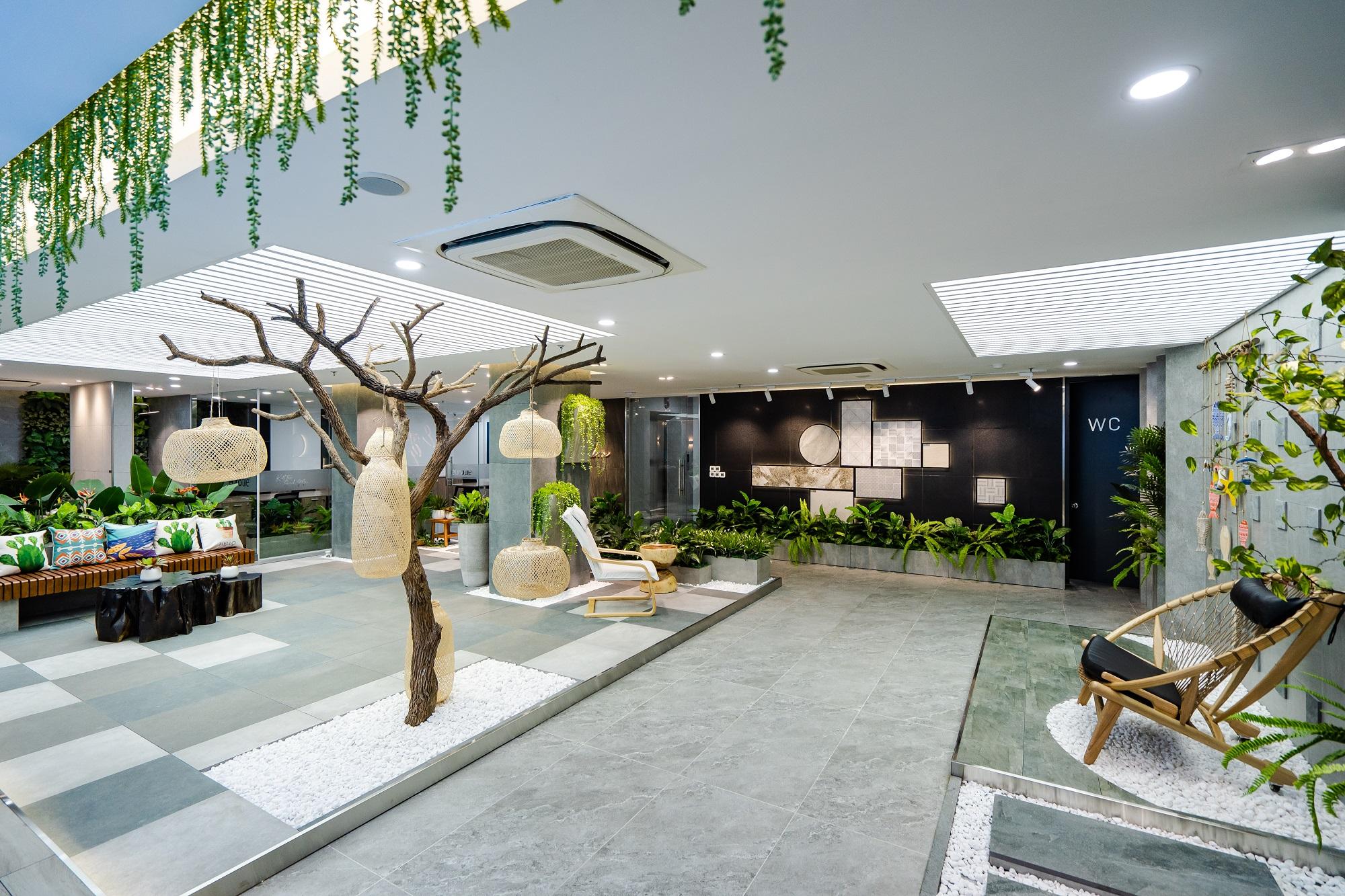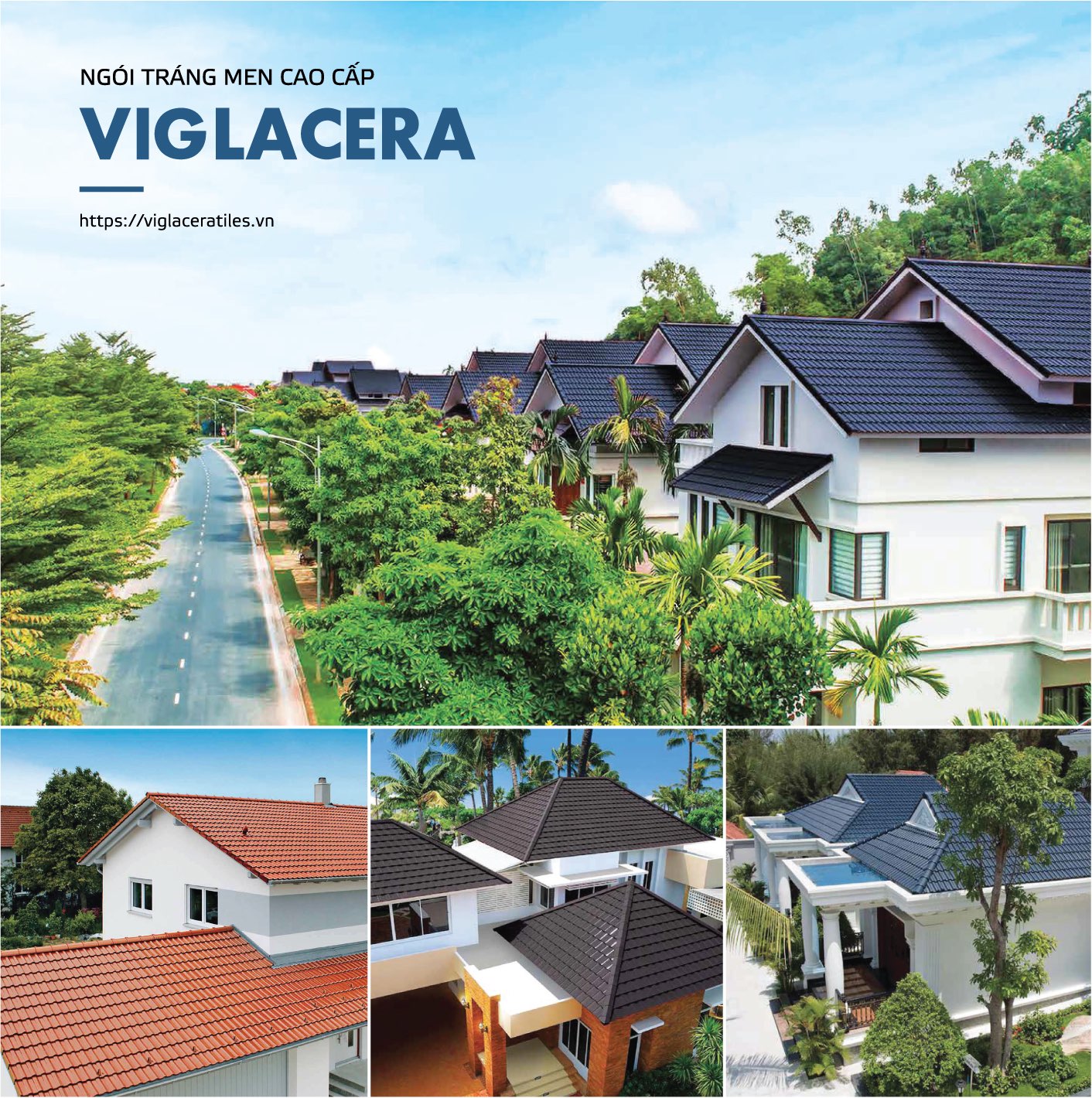News
REDISCOVERING IDENTITY IN VIETNAMESE LIVING SPACES
At the launch of Trend 26+, Assoc. Prof. Dr. Architect Vũ Hồng Cương shared a compelling and nuanced perspective on preserving and developing the identity of Vietnamese interior design—bridging theory and real-world practice. Along this journey, Viglacera—a National Brand of Vietnam with over half a century of growth—not only stands as a companion but actively shapes design trends through its ecosystem of premium ceramic tiles, Vasta Stone sintered surfaces, autoclaved aerated concrete (AAC), and high-end glazed roof tiles.
Vietnamese interior identity should not be misunderstood as merely a stylistic trend. It is a living, integral component of the broader ecosystem that shapes living environments—from landscaping and urban planning to architecture and interior furnishings. Detached from this context, the concept of Vietnamese interior identity remains vague and ungrounded.

Assoc. Prof. Dr. Arch. Vũ Hồng Cương at the Trend 26+ launch—an edition that sets interior design trends rooted in cultural identity.
This identity must originate from Vietnam’s natural conditions, climate, customs, traditions, and regional culture. But it cannot end there. It must be nourished by modern lifestyle needs, a spirit of international integration, and the driving force of technology. As Prof. Hoàng Đạo Kính once noted: “Identity is by no means merely the product of aesthetic sensibility.” Identity is not static; it evolves, refined and enriched through generations.
A Design Industry at a Crossroads
Today, Vietnam’s interior design field is in an intense phase of learning and adaptation from global influences. This is necessary, yet it also leads to anxiety about losing cultural roots. This uncertainty is inevitable in a still-developing sector that lacks a deep, unified theoretical framework to serve as a guiding compass.
Only when a coherent interior and architectural theory is formed—drawn from contemporary projects and prestigious awards—can Vietnamese design identity begin to take on a clearer, more tangible form.
Pioneer designer Trịnh Hữu Ngọc once stated that interior design shapes ways of living. In a society rapidly transforming under globalization, digitalization, and cultural convergence, the Vietnamese way of life is also shifting. Thus, forming a distinctly Vietnamese interior style cannot rely solely on replicating the past or following international trends. It must be a process of distilling cultural essence, welcoming innovation, and shaping living spaces that truly “fit” the lives of Vietnamese people today.

Unfortunately, Vietnamese consumers still struggle to find interior products that embody local elegance while meeting modern functionality. When imported sofas or Đồng Kỵ-style furniture remain the go-to choices, it becomes clear that a truly Vietnamese lifestyle aesthetic has yet to be fully realized.
To change this, education must be the foundation. A sense of cultural identity should be nurtured from the earliest days of a designer’s training. Yet education alone is not enough. Society must also recognize the value of interior design as a discipline that helps define national lifestyle. This requires supportive policies, clear legal frameworks, and appropriate incentives to ensure designers can create with confidence and contribute meaningfully.
In the search to shape and refine Vietnamese interior identity, the involvement of pioneering building material brands is indispensable. With more than 50 years of development, Viglacera does more than supply materials—it partners with the design community to create modern living spaces that reflect authentic Vietnamese spirit.

"Interior design and culture form the soul of a space." – Photo: Eurotile Center Quảng Ninh
As a key participant in the Trend 26+ initiative, Viglacera is more than a sponsor—it is a trendsetter, introducing signature product lines that represent the dialogue between tradition and modernity in Vietnamese living spaces.
Notable examples include:
-
High-end ceramic wall and floor tiles
-
Vasta Stone sintered stone surfaces
-
Autoclaved Aerated Concrete (AAC) blocks
Each product reflects a commitment to sustainable design, tailored to Vietnam’s climate, cultural values, and aesthetic preferences. Among them, ceramic tiles play a vital role—not only offering durability and surface protection but also serving as key design elements that define the style and visual language of interior spaces.

Viglacera’s high-end glazed roof tiles
Viglacera’s high-end glazed roof tiles are another essential part of the brand’s Green product ecosystem. These tiles are not merely roofing materials—they symbolize identity-preserving innovation: maintaining the traditional roof silhouette that resonates with Vietnamese memory, while upgrading technology, durability, and performance.
A Long-Term Commitment to Vietnamese Design
Through continuous investment in technology, design, and product innovation, Viglacera is helping redefine the modern Vietnamese living space—making the once-abstract idea of “Vietnamese interior identity” a tangible reality in each project and each home.
This represents the long-term commitment of a national brand: to walk alongside architects, designers, and communities in creating a Vietnamese lifestyle that is distinctive, sustainable, and rich in identity.